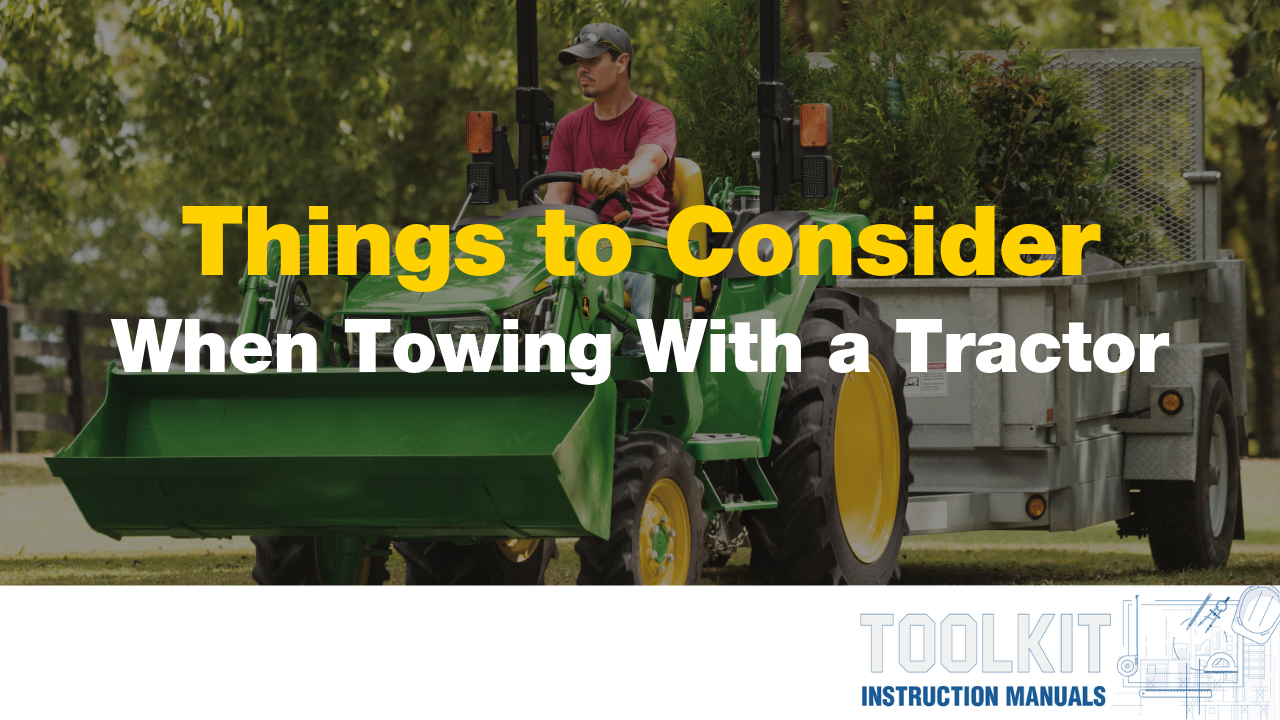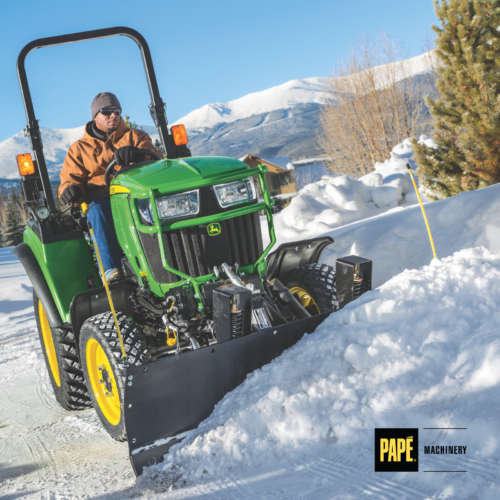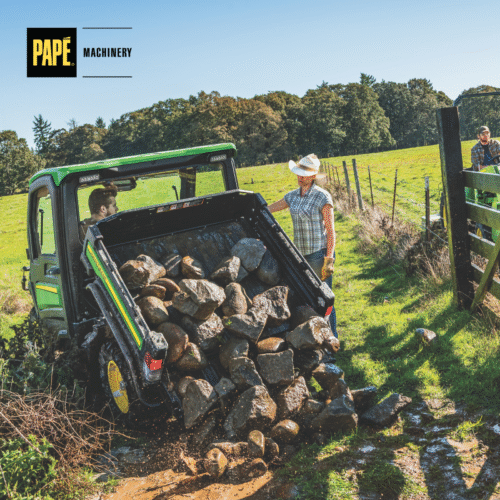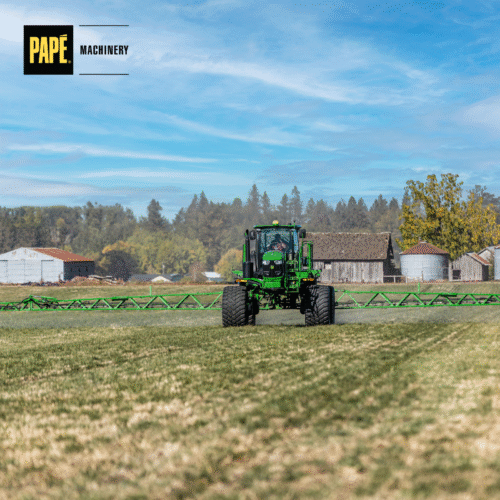A John Deere Sub Compact Utility Tractor has a variety of uses, including the ability to tow large loads, such as a boat or trailer, across your property. Most tractors should include a standard drawbar, with a pin for removal and adjustment of the ball mount, that can be connected with your trailer. If you’re looking for greater versatility for frequent hookups, you can also use an extended multi-point drawbar that attaches to the 3-point hitch. The benefit of this option is the ability to hookup from different starting positions, perform on-the-go height adjustments with the 3-point and it provides additional space between the tractor and trailer. Now either option will get the job done, but there are still a few things you should consider when moving a trailer or hookup to be sure it’s done safely.
Before Hooking Up:
1) The Proper Towing Capacity
Within the owners manual, you can find the recommended towing capacity based on the weight of the machine. This is typically the maximum weight to shoot for without any additional implements or modifications added to the tractor. If you are unable to find this metric, a good rule of thumb is that the towing capacity is typically 50% of the machine’s weight.
2) Your Property
The actual towing process may differ depending on the layout of your property and the distance of the tow. Do you have to make it up and down hills? Is your property made up of muddy or uneven terrain? Those few things will make a difference in the amount of power and traction your tractor will have, so be sure to consider this before hooking up.
3) The Tow
Review what you’re hauling and check if the load looks especially high or unevenly distributed. If the weight is top heavy or delegated to one side of the trailer, it is more likely to tip over at higher speeds or on uneven terrain.
4) The Tractor
The last thing to consider is the machine itself, mainly the following things:
- The tires on the tractor (i.e. ag tires, turf tires, industrial)
- 4-Wheel Drive or 2-Wheel Drive
- Draw Bar Height (Below rear axle or extended for adjustment)
- Rear weight of the tractor (Added wheel weights or fluid within tires for greater traction)
- Front weight of the tractor (Front-End Loader attached and/or additional weight in the bucket)
You want to be sure that the tractor is equipped to handle the terrain effectively and has sufficient front and rear weight to handle the tow. Adjustments can be made on almost every aspect of the list above, aside from the 4-Wheel or 2-Wheel Drive Option, and again comes back to the distance and type of terrain you will be working on.
Safety When Towing:
Once you’ve started moving the trailer, be sure you have an exit strategy for if you find yourself either stuck, tipping over or sliding. If any of those circumstances occur, stop the tractor, apply the brake and immediately exit the vehicle. Approach once it settles and either adjust/redistribute the load, detach the trailer or apply extra weight to the front and back of the tractor to improve control. Make sure to have additional personnel on hand to assist with moving and detaching if the tractor or trailer is unstable or in a precarious situation.
We hope you found those Tractor Towing Tips helpful and if you’re looking for a brief run-through of the different drawbar options, be sure to check out our recent Toolkit Episode on the Papé Machinery YouTube Channel.
If you have further questions or aren’t sure which option works best for your use case, call or visit your local Papé Machinery location for in-depth assistance from a Papé member.
Lastly, if you have any additional questions or topics you’d like to see covered on The Toolkit, send us an email at pcmarketing@pape.com and it may pop up on an upcoming episode.







